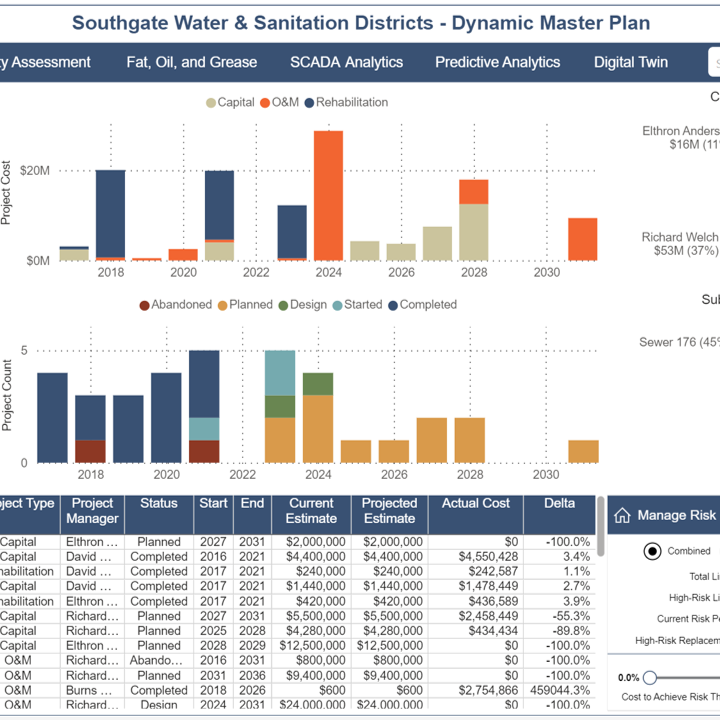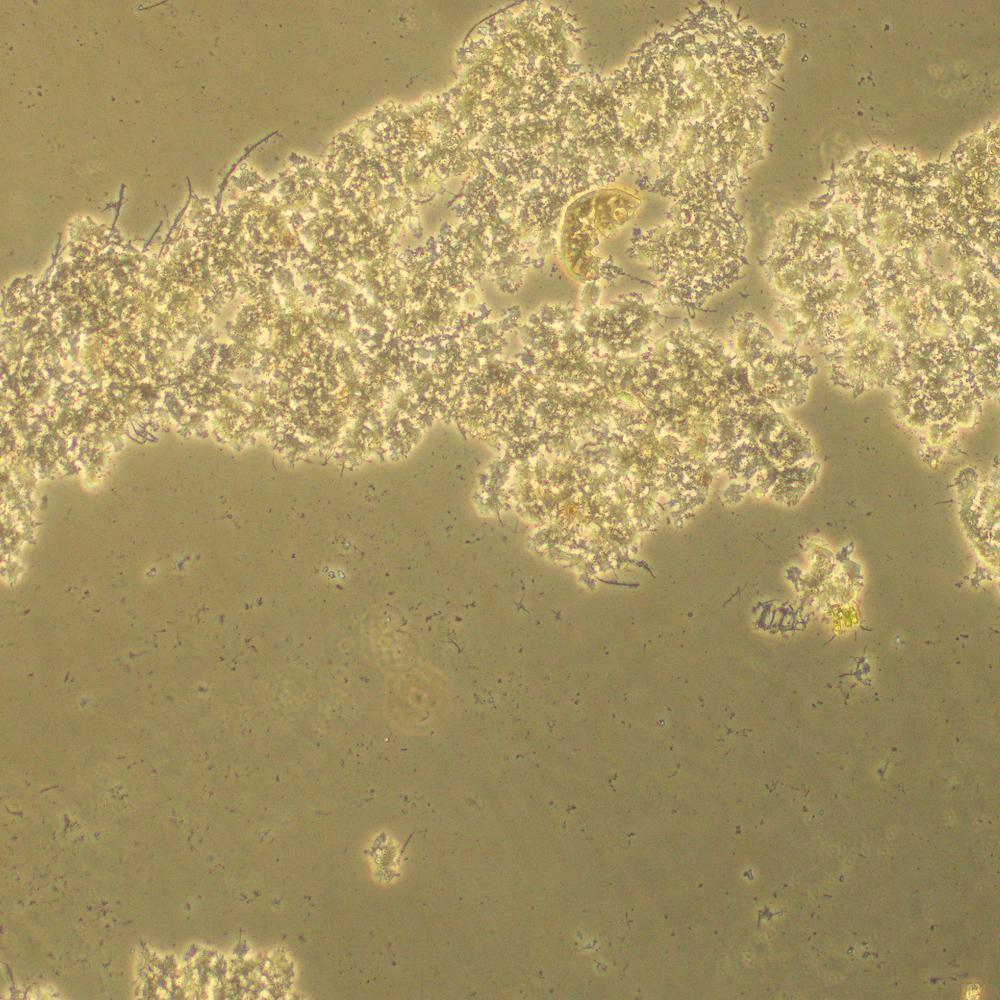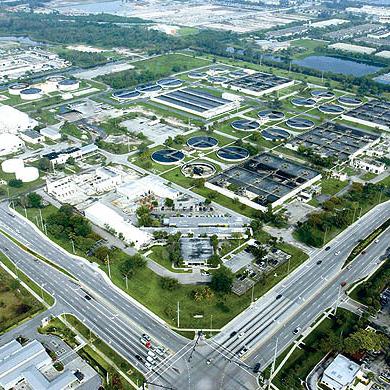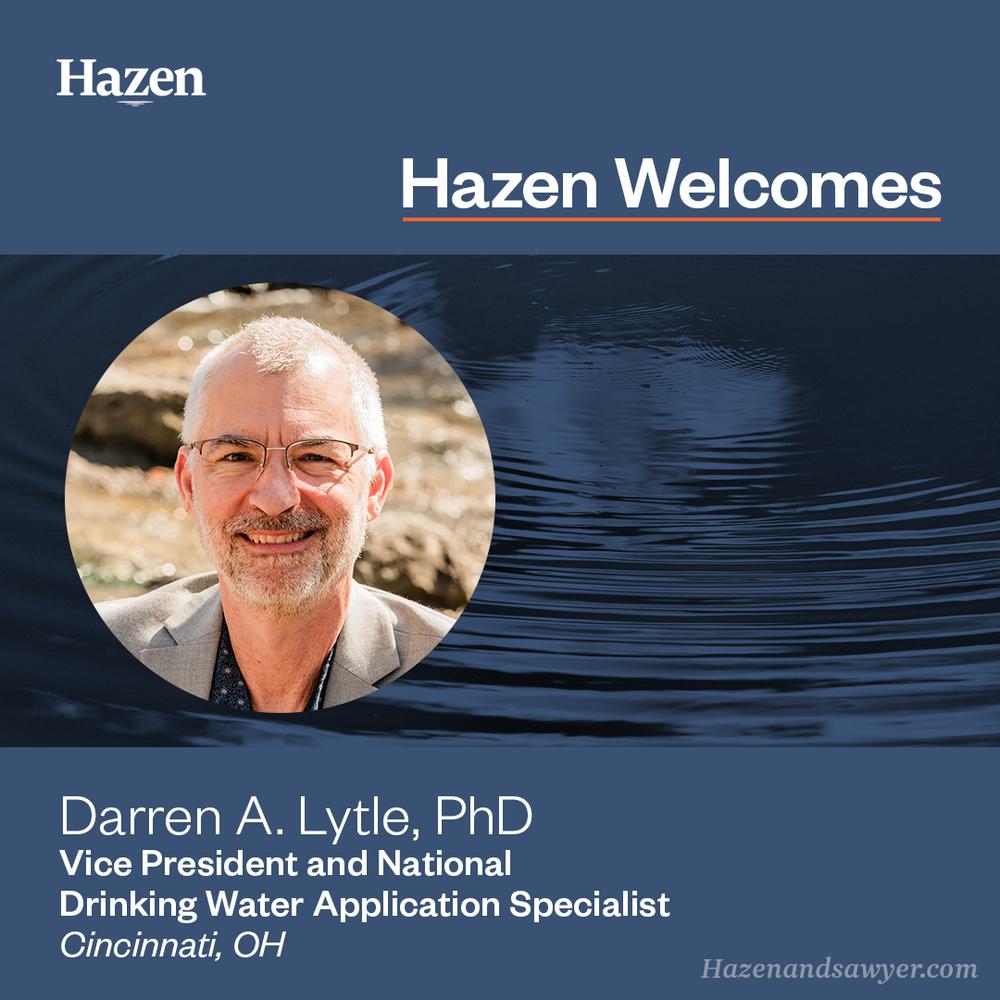From Space to Stream: Using Satellites to Enhance Source Water Quality Monitoring
With funding from the National Atmospheric and Space Administration (NASA), Hazen developed a Remote Sensing Water Quality Decision Support System (DSS) that gives water utilities ready access to NASA’s satellite remote sensing data, filtered for watersheds of interest and presented in a usable format for utility staff.

Satellite remote sensing data offers a detailed watershed snapshot at high temporal resolution that can support an improved understanding of sources of contamination. Depicted here is Landsat-based predicted chlorophyll-a concentrations in Falls Lake, North Carolina. Credit: Dr. Amita Mehta, NASA
At a Glance
- The Hazen Decision Support System (DSS) gives water utilities ready access to NASA’s satellite remote sensing data, filtered and presented in a way that is easy for utility staff to analyze and summarize for decision-makers.
- Remote sensing data provides a low-cost way to increase utilities’ spatial and temporal understanding of source water quality and the impacts of related watershed changes.
- As more data becomes available, the Hazen DSS can further refine it to provide quick access and facilitate accurate analyses.

Josh Weiss, PhD, PE, D. WRE serves as Hazen's Director of Water Resources Innovations, leading applied research projects that integrate new data sets and analytical tools to enhance utility decision-making.
Related Topics:
While it is well-established that terrestrial conditions within the watershed influence surface water quality, most water utilities do not have the capability to monitor contaminated watershed sources with great temporal or spatial detail. In most cases, a water utility’s knowledge of source water quality is limited to monthly or even quarterly measurements at a few discrete locations, typically within the water body itself.

While useful, these data are not sufficient to allow for full characterization of seasonal trends or annual variations in concentrations or character of critical water quality constituents. Satellite data, on the other hand, can provide frequent observations across an entire watershed of the subtle changes to environmental conditions that drive water quality.
Remote sensing data is highly valuable as a low-cost way to increase utilities’ understanding of source water quality and the impacts of related watershed changes. As more data becomes available, the Hazen DSS can further refine this information to provide quick access and facilitate accurate analyses for decision-makers.


The DSS will give water utilities user-friendly access to NASA’s satellite remote sensing data, filtered for the watershed of interest, and presented for utility staff to analyze and summarize for decision-makers.



















